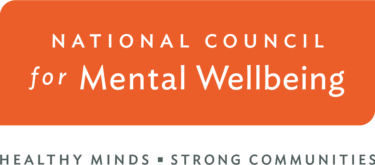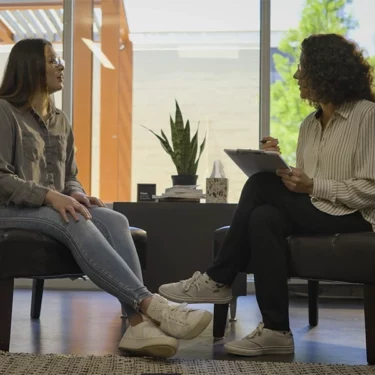The horror of our nation’s youth mental health crisis is best understood by listening to young people describe the mental health and substance use challenges they have faced – and continue to face.
A new documentary by Ken Burns, “Hiding in Plain Sight: Youth Mental Illness,” tells the stories of young people so thoroughly and so incredibly well on the important topic of mental health, and it forces us to confront their pain and the urgent need to help young people and their families cope with mental health and substance use challenges.
The documentary tells the story of 23 young people, including Samantha Fisher, a Vermont native who has confronted mental health challenges all her life. It tells the story of Gabe Peaslee, a 16-year-old native of Miles City, Montana. And it tells the story of Kevin Earley, whose experienced mental health challenges for the first time in his 20s.
Last week, I was honored to join Kevin and some of the others in the documentary for a screening.
“For many years, an alarming number of young people have struggled with mental health challenges—and the pandemic has made it exponentially worse. The isolation. The anxiety. The grief. We have so much work to do to help our children heal. We have so much work to do to make sure that no one feels like their pain has to be hidden. We want young people everywhere to know: We see you. We hear you. And we will work to make this better,” the First Lady said to the group of about 50 people assembled in the East Room.
Like any good documentary, “Hiding in Plain Sight” is both difficult to watch but extremely important to view because it addresses an issue of massive importance. Our nation’s young people are struggling with their mental wellbeing like never before.
Last year, U.S. Surgeon General Dr. Vivek Murthy issued an advisory on the youth mental health crisis. Compared with 2019, emergency room visits for suicide attempts rose 51 percent for adolescent girls in early 2021. Among boys, there was a four-percentage point increase. Depression and anxiety doubled during the coronavirus pandemic, with 25 percent of youths experiencing depressive symptoms and 20 percent suffering anxiety symptoms, according to the Surgeon General’s report.
The pandemic removed young people from the classroom and forced them into isolation. A wave of violence – in Buffalo, in Uvalde – has contributed to their anxiety.
“Hiding in Plain Sight” provides the raw details of their experience with mental health and substance use challenges. It provides a stark view of the difficulties receiving care and how sometimes treatment works and sometimes it does not. It provides heartbreaking accounts of the struggles of families.
The documentary tells the story of one North Dakota family that had to drive 400 miles every other weekend to visit their nine-year old at an inpatient facility because that was the nearest one they could find. That gut-wrenching anecdote underscores the importance of our fight to improve access.
The documentary provides many anecdotes and insights about mental health, substance use, the impact on people and families and the hurdles they face. “Hiding in Plain Sight” sheds light on one of the greatest health care challenges of our time, why it’s so important to talk about mental health and substance use and why it’s so important to ensure access to care.
As you can tell, I’m not a movie reviewer. But I am a human being, and this film had a profound effect on me because it put a face – 23 beautiful faces – on this issue that can be so hard for people to understand. That’s why “Hiding in Plain Sight” will have a lasting impact.
I encourage you to watch episode one of “Hiding in Plain Sight” and broaden your own understanding of youth mental illness, what families go through, and why our work and the work of our members is so important. You can learn more about the project here (and you will also notice our logo at the bottom of the page because we were a partner in the effort).




